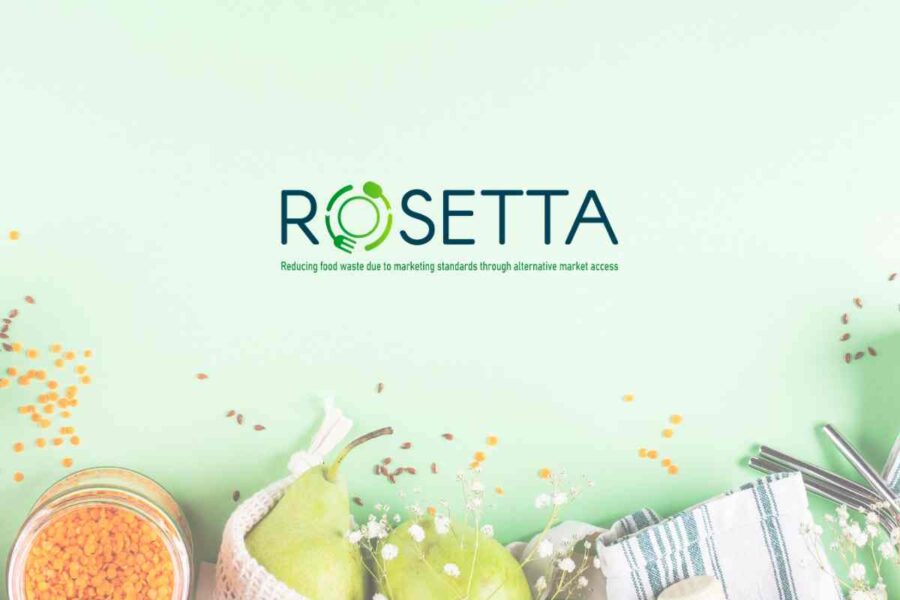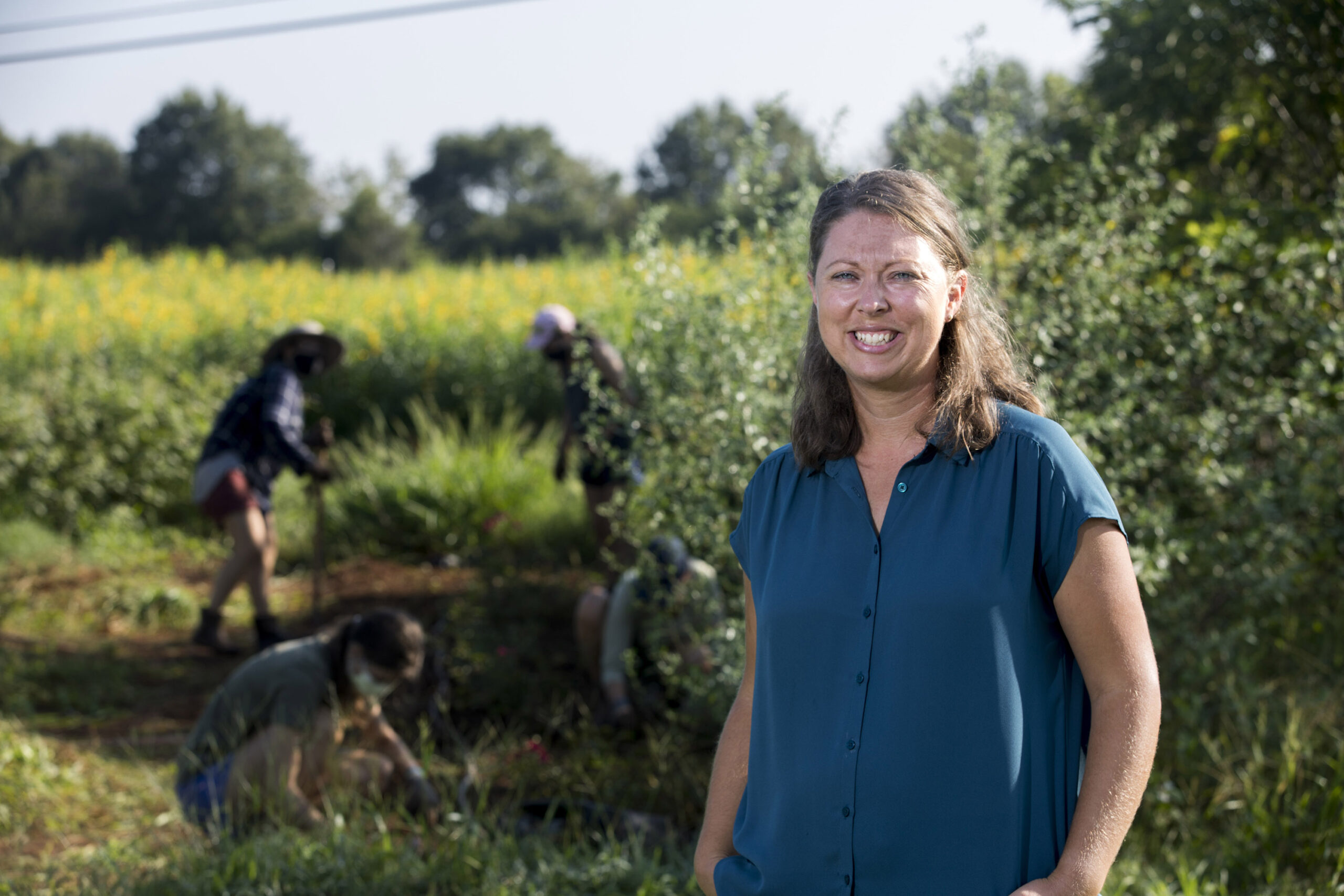
Tarkett’s Third Annual Circularity Summit
Date: April 25, 2024
This month, Tarkett hosted its third annual Circularity Summit, bringing together thought leaders from 14 distinct organizations serving the built environment to collaboratively tackle the challenges of achieving a circular economy. The group spent two days at the Inn at Serenbe, situated among Georgia’s Chattahoochee Hills, discussing topics such as deconstructing deconstruction, landfill diversion, reducing carbon impacts, and integrating sustainable practices throughout all aspects of business strategy.
“[Sharing] diverse perspectives on challenges that matter to us all is vital in developing sustainable solutions,” said Roxane Spears, vice president of sustainability for Tarkett North America.
Each attendee brought a sense of purpose and inspiration to the summit. In addition to discussing, for example, how construction and deconstruction workflows can have meaningful impact on organizational carbon reduction, the group came to a consensus that it must become standard business practice to consider a product’s material ingredients, life cycle, and end of life plan in manufacturing, specification, installation, and flooring removal.
“Over the course of the two days, I was truly inspired by the wealth of knowledge shared, the insightful discussions, and the passionate commitment demonstrated by all the speakers and attendees,” said Vicky Choi, an associate director for project management at Gilead Sciences.
Tarkett’s Circularity Summit is just one of many initiatives the company leads in an effort to reach its SBTi 2030 target to reduce its greenhouse gas emissions by 30% across Scopes 1, 2, and 3. ReStart®, its take-back and recycling program, is another important part of Tarkett’s holistic approach to a circular economy. In 2023, Tarkett North America recycled over 1.5 million pounds of flooring waste through ReStart and innovated a way to recycle the non-PVC backing of post-consumer ethos® carpet tile into new ethos backing.
To learn more about Tarkett’s sustainability initiatives, visit commercial.tarkett.com/sustainability.
About Tarkett
With a 140-year history, Tarkett is a worldwide leader in innovative and durable flooring and sports surface solutions, generating net sales of 3.4 billion euros in 2023. The Group has around 12,000 employees, 23 R&D centres, 8 recycling centres and 34 production sites. Tarkett designs and manufactures solutions for hospitals, schools, housing, hotels, offices, shops and sports fields, serving customers in more than 100 countries. To build “The Way to Better Floors”, the Group is committed to the circular economy and sustainable development, in line with its Tarkett Human-Conscious Design® approach. Tarkett is listed on the Euronext regulated market (compartment B, ISIN: FR0004188670, ticker: TKTT). www.tarkett-group.com
Every Step Matters
For years, Tarkett has raised the sustainability standards of the flooring industry. It purposefully designs floors with total transparency to create healthier, safer spaces for both people and planet. When Tarkett floors reach their end of life, the company’s ReStart® program makes it possible for them to be repurposed or recycled. Tarkett’s near-term science-based carbon emissions reduction targets have been validated by the Science Based Targets initiative (SBTi) and are fully aligned with the Paris Climate Agreement objective to limit global warming by 1.5 degrees Celsius. For more information, visit commercial.tarkett.com/sustainability.
Source: Tarkett USA, Inc.
SDGs, Targets, and Indicators
1. Which SDGs are addressed or connected to the issues highlighted in the article?
- SDG 12: Responsible Consumption and Production
- SDG 13: Climate Action
- SDG 15: Life on Land
The article discusses Tarkett’s commitment to creating a circular economy, reducing greenhouse gas emissions, and preserving natural resources. These issues align with the goals of SDG 12, SDG 13, and SDG 15.
2. What specific targets under those SDGs can be identified based on the article’s content?
- Target 12.2: By 2030, achieve the sustainable management and efficient use of natural resources.
- Target 12.5: By 2030, substantially reduce waste generation through prevention, reduction, recycling, and reuse.
- Target 13.2: Integrate climate change measures into national policies, strategies, and planning.
- Target 15.2: By 2020, promote the implementation of sustainable management of all types of forests.
Based on the article’s content, Tarkett aims to achieve a circular economy, reduce waste through recycling and reuse programs like ReStart®, and reduce greenhouse gas emissions by 30% across Scopes 1, 2, and 3. These targets align with the goals of SDG 12, SDG 13, and SDG 15.
3. Are there any indicators mentioned or implied in the article that can be used to measure progress towards the identified targets?
- Indicator 12.2.1: Material footprint, material footprint per capita, and material footprint per GDP.
- Indicator 12.5.1: National recycling rate, tons of material recycled.
- Indicator 13.2.1: Number of countries that have integrated climate change measures into national policies, strategies, and planning.
- Indicator 15.2.1: Progress towards sustainable forest management.
The article mentions Tarkett’s recycling program, ReStart®, which recycled over 1.5 million pounds of flooring waste in 2023. This can be used as an indicator for measuring progress towards waste reduction (Indicator 12.5.1). Additionally, Tarkett’s commitment to reducing greenhouse gas emissions by 30% can be measured using Indicator 13.2.1, which tracks the number of countries that have integrated climate change measures into their policies and strategies.
Table: SDGs, Targets, and Indicators
| SDGs | Targets | Indicators |
|---|---|---|
| SDG 12: Responsible Consumption and Production | Target 12.2: By 2030, achieve the sustainable management and efficient use of natural resources. | Indicator 12.2.1: Material footprint, material footprint per capita, and material footprint per GDP. |
| SDG 13: Climate Action | Target 13.2: Integrate climate change measures into national policies, strategies, and planning. | Indicator 13.2.1: Number of countries that have integrated climate change measures into national policies, strategies, and planning. |
| Target 12.5: By 2030, substantially reduce waste generation through prevention, reduction, recycling, and reuse. | Indicator 12.5.1: National recycling rate, tons of material recycled. | |
| SDG 15: Life on Land | Target 15.2: By 2020, promote the implementation of sustainable management of all types of forests. | Indicator 15.2.1: Progress towards sustainable forest management. |
Copyright: Dive into this article, curated with care by SDG Investors Inc. Our advanced AI technology searches through vast amounts of data to spotlight how we are all moving forward with the Sustainable Development Goals. While we own the rights to this content, we invite you to share it to help spread knowledge and spark action on the SDGs.
Fuente: victoriaadvocate.com

Join us, as fellow seekers of change, on a transformative journey at https://sdgtalks.ai/welcome, where you can become a member and actively contribute to shaping a brighter future.






